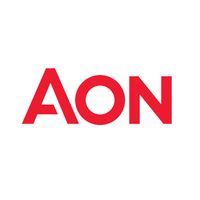How inclusive are your communications? The top considerations when designing reward messages

Aon's Dom Manley and Sarah Robson will be hosting a discussion group at the Employee Wellbeing Congress at 12.30pm on 16th September. The topic up for discussion is: Ways to encourage financial behaviour change among employees. Register here to attend.
Difficult but important conversations around gender, race, sexual orientation, disability and mental health have been opened up. But whereas most forward-thinking employers already agree that the D&I piece is important, many are now having to go a step further and bring about a sustainable cultural shift to create genuine inclusive environments. Daily microaggressions which were sometimes written off as ‘harmless banter’ are now unacceptable. Leadership and HR are looking at the messages and communications they put out to ensure they are in line with D&I policies.
It’s no good investing in diversity recruitment drives if the workplace culture is biased against a particular group or groups, and microaggressions are swept under the carpet; there needs to be a solid inclusive foundation there already. Workplace communications are a key part of this.
So why is it important for employers to ensure workplace communications are as inclusive as possible? “It’s about reinforcing a healthy workplace culture and ensuring that everyone is empowered to succeed,” says Andy Partridge, senior communications consultant at Aon. “It’s critical to engage with your whole audience. In an age where employers are increasingly looking to segment communications to make their messages relevant, it’s important to be as inclusive as possible to help your messaging land successfully.”
So inclusive communication, when done right, informs and engages all employees and gives a voice to diverse groups while fostering a real sense of belonging. With all this in mind, what are the top considerations when designing inclusive reward and benefits messages?
Engage with your workforce
The 1990s disability rights movement had a slogan: “Nothing about us without us” and this absolutely rings true here. Don’t create communications and messaging without input from those it affects. Engage with your workforce – ask, don’t assume. Bring together a series of diverse focus groups for their views and open up discussions around language, attitudes and preferences. A word of warning: it’s important not to pigeonhole. As humans, we tend to fall into many ‘categories’ and identify as many different things all at once, so be mindful of over-labelling.
Taking advantage of awareness days and other relevant calendar events to promote D&I policies can also help open-up conversations and get people involved and interested.
Consider your language
The language we use is important, especially when it comes to corporate communications and messaging. Language should be free from words and phrases which inadvertently side-line or stigmatise a certain group or groups. Even colloquialisms such as ‘guys’ or ‘manpower’ can inadvertently encourage a male-dominated culture. In the same way, constantly referring to ‘working mums’ in communications instead of ‘parents’, ‘guardians’ or ‘carers’ can make fathers and/or foster and adoptive families feel irrelevant or forgotten about. Also remember that parents can be same-sex parents, so avoid references to ‘mothers and fathers’.
Disability comes in all forms
“From a disability perspective, employers need to think about how inclusive their messages are to people with a wide range of disabilities,” says Partridge. “Those responsible for corporate communications need to remember that every communication created will be viewed by an audience that is likely to include someone who has a disability or is classed as vulnerable. Videos should be subtitled as standard, and braille or plain-text format that can be read by a screen-reader should be considered for written communication, as well as additional translation services or options to enlarge text or font.”
Non-verbal comms are important too
All too often, employers focus so much on getting written communications right, they forget about the non-verbal forms. Images on the company’s intranet, corporate videos, information sent by SMS, posters – how inclusive are these forms of communication? Are your images typically of white, middle-aged men gathered round a laptop or do all corporate images and non-verbal messaging represent a good cross section of the workforce and society as a whole? It’s important that employees feel represented in all forms of communication, so think holistically.
This article is provided by Aon.







